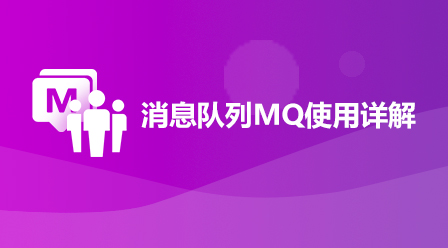
在构建restful api时,http状态码是客户端与服务器之间沟通请求结果的基础。例如,404 not found表示资源不存在,400 bad request表示请求参数有误,409 conflict表示请求与目标资源的当前状态冲突。然而,仅仅依赖这些通用的http状态码往往不足以提供足够的上下文信息,尤其是在复杂的业务场景中。
考虑以下场景:
如果所有“资源未找到”的情况都只返回一个泛泛的 404,那么客户端或终端用户将无法区分是“用户未找到”还是“商品未找到”。同样,一个通用的 400 或 409 也无法明确告知用户是“用户名已存在”还是“邮箱已存在”,或者“订单状态不允许此操作”。
自定义异常(如 UserNotFoundException、NameAlreadyExistsException)的价值在于它们能够携带更具体的业务含义。它们是业务逻辑层面的错误描述,能够清晰地指明问题的类型和原因,从而:
自定义异常并非要取代HTTP状态码,而是对其进行补充和增强。最佳实践是让自定义异常与合适的HTTP状态码协同工作。这意味着,虽然你的代码抛出的是 UserNotFoundException,但最终响应给客户端的HTTP状态码仍应是 404 Not Found。
以下是一些常见的映射示例:
Spring Boot提供了强大的机制来集中处理这些自定义异常,并将它们映射到相应的HTTP状态码和响应体。
在Spring Boot中,通常通过以下步骤实现和处理自定义异常:
定义自定义异常类: 自定义异常通常继承自 RuntimeException(非受检异常),这样在业务代码中抛出时无需强制捕获,简化了代码。
// 用户未找到异常
public class UserNotFoundException extends RuntimeException {
public UserNotFoundException(String message) {
super(message);
}
}
// 名称已存在异常
public class NameAlreadyExistsException extends RuntimeException {
public NameAlreadyExistsException(String message) {
super(message);
}
}
// 示例:无效输入异常
public class InvalidInputException extends RuntimeException {
public InvalidInputException(String message) {
super(message);
}
}在业务逻辑中抛出自定义异常: 在Service层或Controller层,当检测到特定业务错误时,抛出相应的自定义异常。
@Service
public class UserService {
public User getUserById(Long id) {
// 假设从数据库查询用户
User user = userRepository.findById(id)
.orElseThrow(() -> new UserNotFoundException("User with ID " + id + " not found."));
return user;
}
public User createUser(User user) {
if (userRepository.existsByName(user.getName())) {
throw new NameAlreadyExistsException("Username '" + user.getName() + "' already exists.");
}
return userRepository.save(user);
}
}全局异常处理: 使用 @ControllerAdvice 和 @ExceptionHandler 注解来创建全局异常处理器,统一捕获和处理这些自定义异常,并生成统一的错误响应。
import org.springframework.http.HttpStatus;
import org.springframework.http.ResponseEntity;
import org.springframework.web.bind.annotation.ControllerAdvice;
import org.springframework.web.bind.annotation.ExceptionHandler;
@ControllerAdvice
public class GlobalExceptionHandler {
@ExceptionHandler(UserNotFoundException.class)
public ResponseEntity<ErrorResponse> handleUserNotFoundException(UserNotFoundException ex) {
ErrorResponse error = new ErrorResponse(HttpStatus.NOT_FOUND.value(), ex.getMessage());
return new ResponseEntity<>(error, HttpStatus.NOT_FOUND);
}
@ExceptionHandler(NameAlreadyExistsException.class)
public ResponseEntity<ErrorResponse> handleNameAlreadyExistsException(NameAlreadyExistsException ex) {
ErrorResponse error = new ErrorResponse(HttpStatus.CONFLICT.value(), ex.getMessage());
return new ResponseEntity<>(error, HttpStatus.CONFLICT);
}
@ExceptionHandler(InvalidInputException.class)
public ResponseEntity<ErrorResponse> handleInvalidInputException(InvalidInputException ex) {
ErrorResponse error = new ErrorResponse(HttpStatus.BAD_REQUEST.value(), ex.getMessage());
return new ResponseEntity<>(error, HttpStatus.BAD_REQUEST);
}
// 可以定义一个通用的错误响应结构
public static class ErrorResponse {
private int status;
private String message;
// Getters and Setters
public ErrorResponse(int status, String message) {
this.status = status;
this.message = message;
}
public int getStatus() { return status; }
public void setStatus(int status) { this.status = status; }
public String getMessage() { return message; }
public void setMessage(String message) { this.message = message; }
}
}通过这种方式,客户端在接收到错误响应时,不仅能看到HTTP状态码(如404),还能在响应体中获取到更具体的错误信息(如{"status": 404, "message": "User with ID 123 not found."}),从而更好地理解和处理错误。
自定义异常在Spring Boot的异常处理中扮演着至关重要的角色。它们通过提供比通用HTTP状态码更丰富的业务上下文,极大地提高了应用程序的健壮性、可维护性和用户友好性。通过合理地定义和处理自定义异常,并将其映射到适当的HTTP状态码,我们可以构建出响应更精确、用户体验更佳的API服务。
以上就是Spring Boot异常处理:为何需要自定义异常而非仅依赖HTTP状态码的详细内容,更多请关注php中文网其它相关文章!

每个人都需要一台速度更快、更稳定的 PC。随着时间的推移,垃圾文件、旧注册表数据和不必要的后台进程会占用资源并降低性能。幸运的是,许多工具可以让 Windows 保持平稳运行。




Copyright 2014-2025 https://www.php.cn/ All Rights Reserved | php.cn | 湘ICP备2023035733号